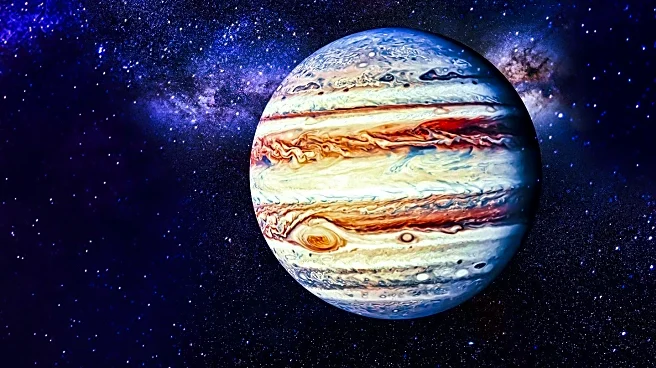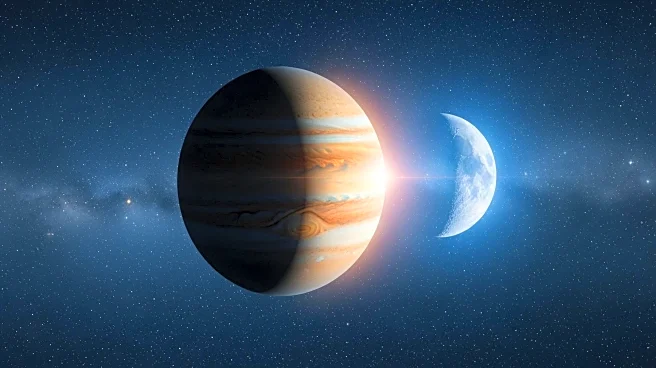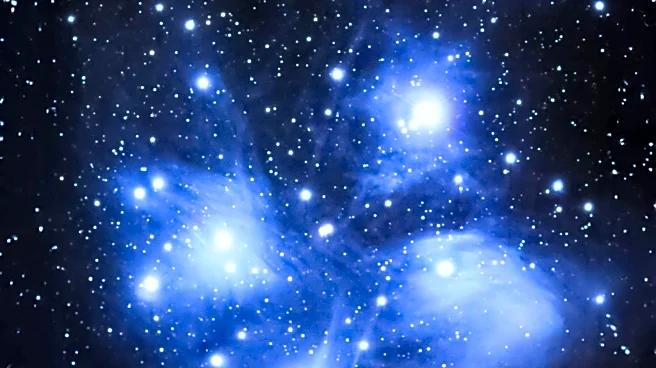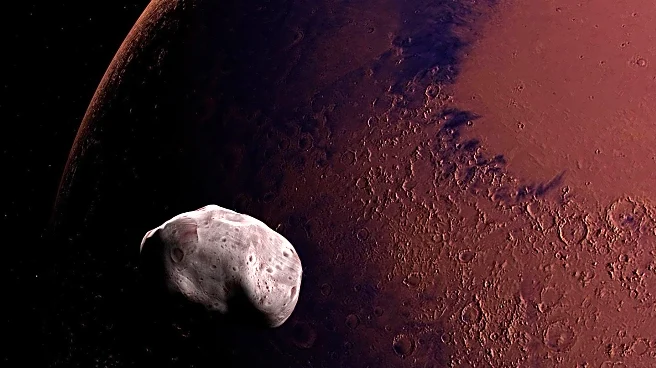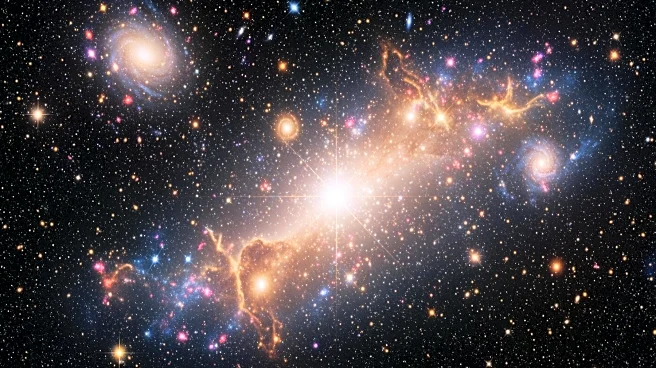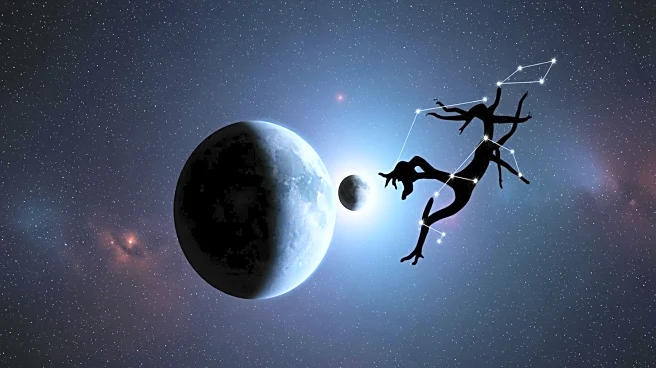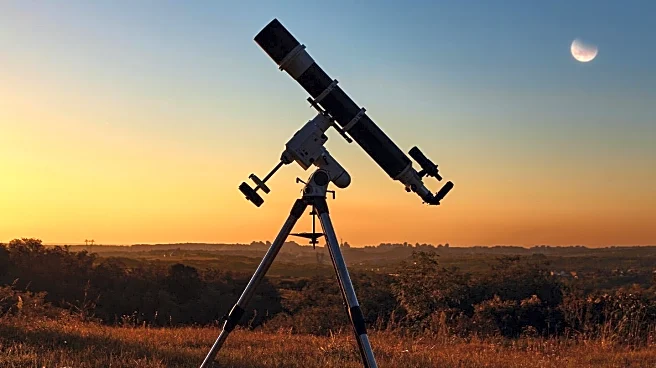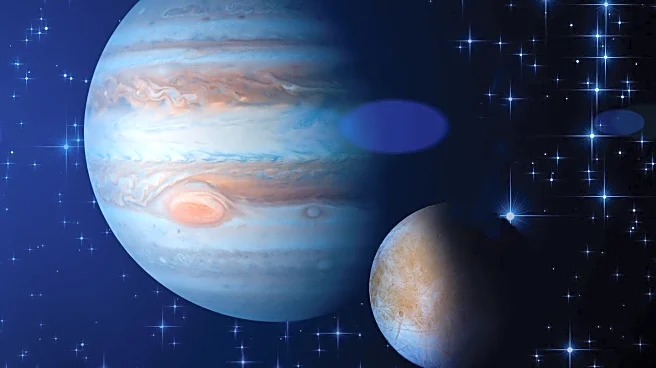What's Happening?
Astronomy Magazine reports that on November 9, the Moon will pass 4° due north of Jupiter, with both celestial bodies observable in the constellation Gemini during the early morning hours. Jupiter, shining
at magnitude –2.4, will be easily identifiable despite the bright waning gibbous Moon, reaching a peak altitude of 70° above the southern horizon around 4:30 A.M. local time. Additionally, asteroid 471 Papagena will achieve opposition on November 9 at 10 A.M. EST, situated within the constellation Cetus. With a magnitude of 9, Papagena can be viewed after its 6 P.M. local time rise and prior to the 10 P.M. local time moonrise, located 1.3° south of the 5th-magnitude star Kappa Ceti.
Why It's Important?
The conjunction of the Moon and Jupiter offers a unique opportunity for astronomers and sky enthusiasts to observe two bright celestial bodies in close proximity. Such events can enhance public interest in astronomy and provide educational opportunities for schools and amateur astronomers. The visibility of asteroid Papagena adds another layer of interest, as observing asteroids can contribute to understanding their composition and behavior. These events highlight the dynamic nature of the night sky and encourage engagement with astronomical phenomena.
What's Next?
Sky watchers and astronomers are likely to prepare for the observation of these celestial events, utilizing telescopes and binoculars to enhance their viewing experience. Astronomy clubs and educational institutions may organize events or viewing parties to capitalize on the visibility of the Moon, Jupiter, and Papagena. The continued observation of such events can contribute to ongoing research and public interest in astronomy.
Beyond the Headlines
The visibility of celestial events like the Moon-Jupiter conjunction and asteroid opposition can inspire interest in space exploration and science education. These events serve as reminders of the vastness and complexity of the universe, potentially influencing cultural and scientific perspectives on space and our place within it.



